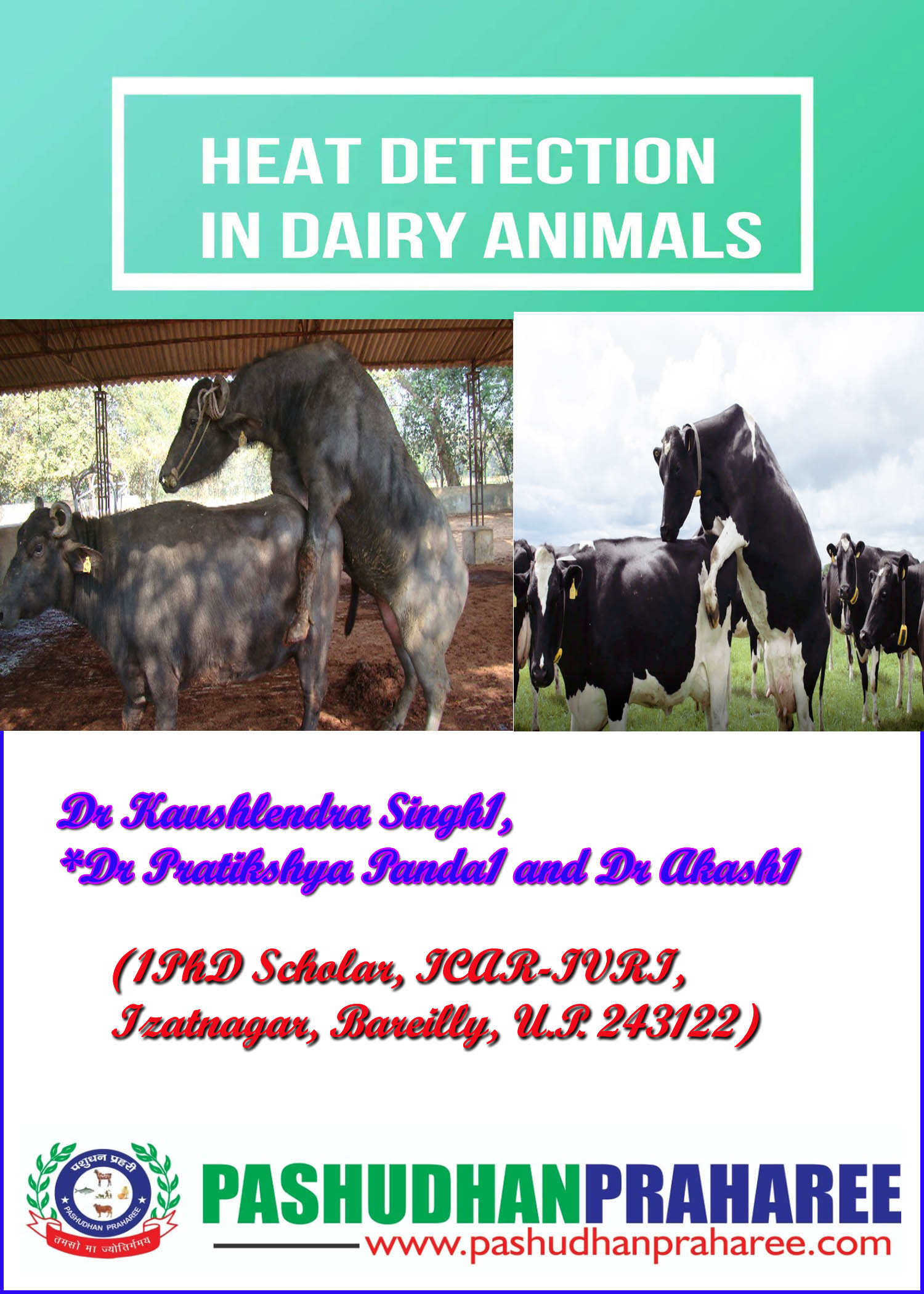Heat Detection in Dairy Animals
Heat detection is the method of identification of signs and symptoms an animal shows preceding ovulation. Improper heat detection is the primary cause of low reproductive efficiency in dairy herds as it creates error in optimal timing of artificial insemination, thus leading to conception failure. Hence, accurate detection of estrus is not only the key to successful artificial insemination but also helps in improving genetic potential of dairy herds.
Various methods can be in practice for detection of heat in dairy herds without fail. Some of these methods are i) Heat detection by visual observation ii) Heat detection by Checking fern pattern of cervical mucosa and iii) Heat detection by use of teaser bull
- Heat detection by visual observation: It is the most common method to identify animal in heat. Symptoms like frequent bellowing, hyperaemic mucus membrane of vulva and vagina, viscous and transparent cervical mucus hanging from vulva is seen. Animals in heat are seen to be licking and smelling other animals. Animals tend to show mounting behaviour. The cow in true heat stands still to be mounted by other cows. However, this mounting behaviour is not seen in case of buffaloes. Most of the estrus signs are poorly observed in case of buffaloes except few such as frequent micturition and switching of tail. Therefore, acceptance of male is the confirmatory sign of heat in buffaloes. Other symptoms like drop in milk yield, loss of appetite and restlessness are also seen in the animals during heat.
- Checking fern pattern of cervical mucosa: Cervical mucus of animal in estrus gives a typical fern pattern when dried on glass slide. Animals in mid heat show typical fern pattern of mucus which makes the reproductive path conducive for transport of sperm into the uterus. This ferning occurs due to crystallization of Sodium Chloride under the influence of estrogen hormone. It is also called as arborisation pattern. IVRI-Crystoscope is a very effective tool for detecting heat by checking the ferning pattern of cervical mucus. It can be more beneficial in buffaloes as all other signs of heat are very poorly observed.
- Heat detection by use of teaser bull: Teaser bull is the vasectomised bull that can be used for detecting heat in organised dairy farms. Though it is vasectomised, it still carries sexual drive/libido and helps in alerting the farm owner about animal in estrus. In case of teaser bull parading, the bull is allowed to roam around the animals and search for the animals in heat. The animals in heat will stand still and let the bull mount over it. It is recommended to conduct the teaser bull parading twice daily i.e. in morning and evening. Teaser bull parading is very much effective in case of buffaloes as they don’t show visible signs of heat during estrus. If a cow/ buffalo is found showing heat in the morning then the same is be taken for artificial insemination in evening and vice versa to get better conception rate.
Infertility in dairy herds have become a chronic problem in recent days. It is also seen that conception failure occurs due to amateur technicians and improper timing of AI. Hence, for perfect execution of AI, proper knowledge about various methods of estrus/heat detection is prerequisite. This may help in improving the conception rate and overall reproductive performance of dairy animals.
Authors: Dr Kaushlendra Singh1, *Dr Pratikshya Panda1 and Dr Akash1
(1PhD Scholar, ICAR-IVRI, Izatnagar, Bareilly, U.P. 243122)
*Corresponding Author: pratikshya.pandavet@gmail.com


